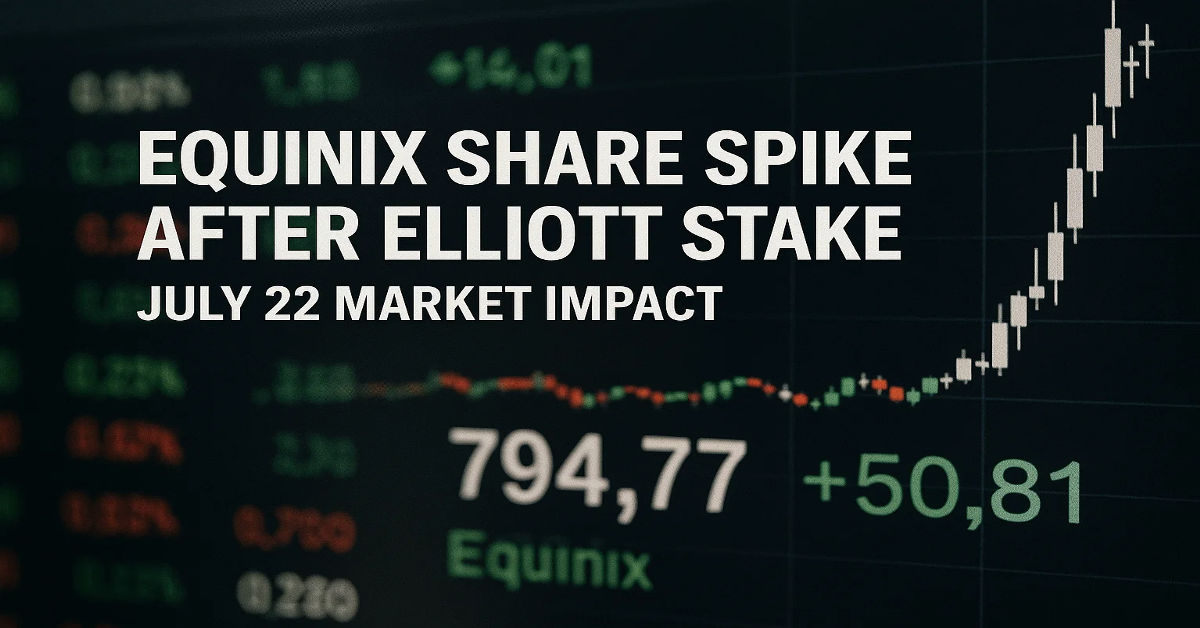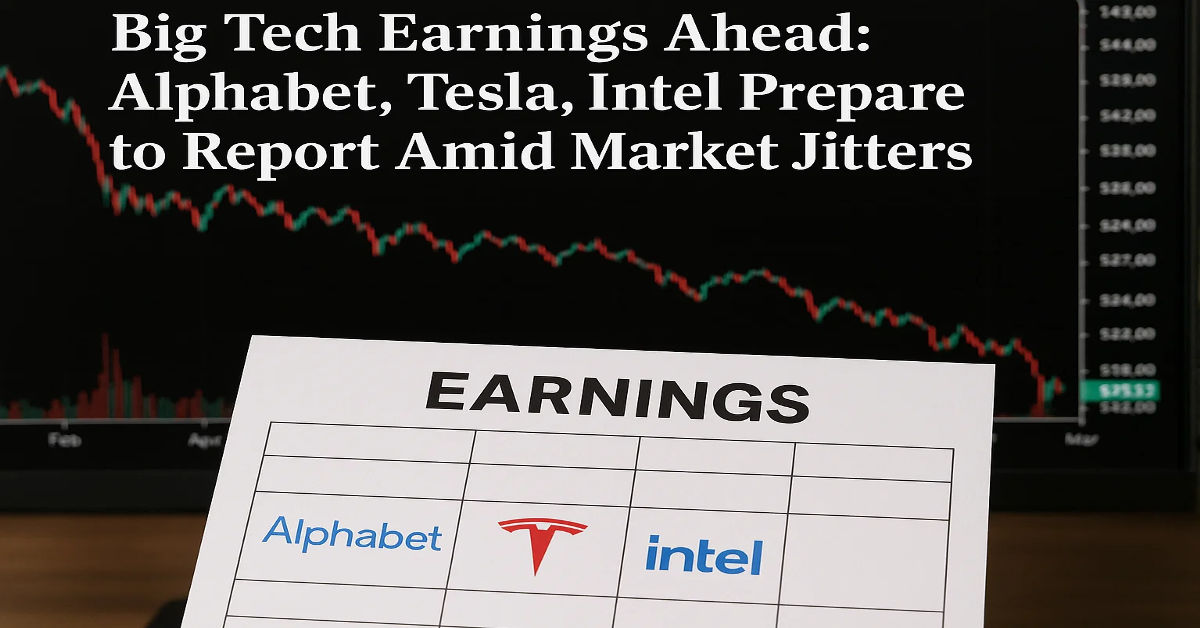
As we move deeper into the second half of 2025, all eyes are on two of the world’s most closely monitored tech giants: Tesla and Alphabet. With both companies scheduled to report their Q2 2025 earnings in the last week of July, analysts, investors, and market observers are bracing for potentially market-moving revelations.
In this article, we’ll break down the Tesla Alphabet Q2 earnings preview July 2025 impact from all angles — revenue forecasts, industry headwinds, AI innovation, geopolitical tensions, and potential implications for the broader tech sector and stock markets.
Tesla Q2 2025 Preview: Navigating a Competitive EV Landscape
🔧 Production and Delivery Updates
Tesla is expected to report modest gains in vehicle deliveries, supported by operational scaling at its Berlin and Shanghai Gigafactories. Analysts estimate global deliveries for Q2 could range between 475,000–495,000 vehicles, up roughly 6–8% year-over-year.
Yet, volume alone isn’t the full story. The market is looking for clues on how Tesla is maintaining growth while managing thinner margins due to:
- Increased price competition from Chinese EV makers like BYD and NIO
- Persistent supply chain inflation on lithium and battery components
- Rising R&D expenses tied to AI and robotics divisions
🚗 Spotlight: Cybertruck and AI Expansion
Tesla’s much-hyped Cybertruck is now entering broader delivery cycles, with high-margin potential if scale meets expectations. At the same time, CEO Elon Musk has hinted that the company’s real long-term value lies in software — particularly Tesla’s Full Self-Driving (FSD) and Dojo supercomputer, which powers its AI training infrastructure.
Investors will be watching to see if Q2 reveals:
- Expansion of FSD subscriptions
- Hardware 5 platform rollouts
- New AI licensing models, perhaps even to third-party automakers
💰 Financial Metrics Forecast
Wall Street consensus (as of July 20) estimates:
- Revenue: $27.4 billion (vs. $24.9B Q2 2024)
- EPS: $0.89 (non-GAAP)
- Operating Margin: ~10.2%, down from 11.4% in Q2 2024
If results beat expectations — especially on EPS or gross margin — Tesla stock could rebound sharply, having traded sideways for much of 2025.
Alphabet Q2 2025 Preview: The AI Arms Race Accelerates
📈 Core Ad Business Faces Subtle Pressures
Alphabet, the parent company of Google, remains heavily reliant on its advertising business, which accounted for over 75% of revenue in Q1 2025. While core ad revenue is expected to grow 7–9% year-over-year, macroeconomic pressures may weigh on performance in key verticals like retail, travel, and real estate.
YouTube remains a bright spot, with YouTube Shorts monetization improving and subscription revenue gaining traction.
☁️ Cloud & AI Growth Momentum
Google Cloud, led by the Gemini AI platform, is projected to be the fastest-growing segment. In a year where Microsoft, Amazon, and Nvidia have dominated AI headlines, Alphabet needs to show that its $20B+ investment in generative AI is delivering ROI.
Look for metrics related to:
- Gemini enterprise integrations
- Vertex AI adoption across industries
- AI-driven enhancements in Google Workspace and Search
This earnings call could be pivotal in reaffirming Alphabet’s position in the AI innovation race.
🧾 Alphabet Q2 Forecasts
- Revenue: $86.1 billion (vs. $77.4B Q2 2024)
- EPS: $1.68
- YouTube Revenue: $9.3 billion
- Google Cloud Revenue: $10.6 billion
Any misses on AI performance or user growth in core platforms could cause short-term volatility in Alphabet’s stock, which has outperformed the Nasdaq 100 in 2025.
Tesla Alphabet Q2 Earnings Preview July 2025 Impact on Markets
📊 Market Reactions: Why It Matters
These two earnings reports — from Tesla and Alphabet — are more than routine filings. They represent economic barometers for:
- Consumer demand (EVs and online behavior)
- AI adoption curves
- Capital expenditure priorities across tech
- Investor sentiment toward mega-cap growth stocks
If both companies report stronger-than-expected results, expect:
- A potential boost in Nasdaq futures and risk-on appetite
- Renewed bullish sentiment in semiconductors, EV, and cloud computing stocks
- Downward pressure on defensive sectors as investors rotate into tech
For an early look at how futures markets are reacting to pre-earnings sentiment, see the S&P 500 and Nasdaq futures trend on July 21.
🌍 Broader Industry Signals and Innovation Narratives
The earnings outcomes will likely feed into broader discussions on innovation leadership. Tesla’s evolution into an AI-driven mobility company — and Alphabet’s bid to dominate enterprise AI — parallel the rise of smaller innovation players in the tech sector.
One such case is Revo Technologies in Murray, Utah, a startup that’s gaining attention for reshaping user experiences through predictive tech. Like Tesla and Alphabet, it underscores the growing intersection of consumer hardware, AI, and seamless ecosystems.
🧠 Key Takeaways
🔹 For Investors:
- Expect volatility, especially if guidance changes or macro concerns are cited
- Watch cash flow, margins, and AI monetization efforts closely
- Be prepared for post-earnings revisions in tech ETF weightings
🔹 For Analysts:
- Use this earnings cycle to recalibrate expectations for the second half of 2025
- Compare AI productivity metrics between Alphabet, Microsoft, and Amazon
- Study how Tesla positions FSD and software licensing as future revenue engines
🔹 For the Broader Economy:
- These earnings will shape policy conversations around automation, regulation, and digital market concentration
- Regulatory pressures — both in the U.S. and EU — may surface during earnings calls and impact long-term strategies
Conclusion
The Tesla Alphabet Q2 earnings preview July 2025 impact is more than a quarterly snapshot — it’s a forward-looking signal of where technology, innovation, and market sentiment are headed. Tesla’s focus on AI and autonomous driving, paired with Alphabet’s aggressive expansion into generative AI and cloud, reflect how the tech landscape is rapidly evolving. These earnings will test investor confidence in high-growth tech amidst a backdrop of economic uncertainty and global competition.
From shifting consumer behavior to bold new innovation models, the Q2 results will either reinforce or challenge existing narratives around Big Tech’s dominance. Strong earnings could reignite bullish momentum in the Nasdaq and broader markets, while any earnings miss — especially in AI or revenue guidance — could trigger investor caution. The stakes are high not just for shareholders, but for the future direction of digital transformation globally.
Ultimately, Tesla and Alphabet are not just reporting results — they’re shaping the blueprint of next-generation technology. As their earnings unfold, analysts and investors alike will be watching for clarity, confidence, and a roadmap that goes beyond Q2. Whether this becomes a turning point or merely a pause in momentum will depend on how well each company proves its leadership in this defining era of innovation.
FAQs
1. What is the significance of Tesla and Alphabet’s Q2 2025 earnings?
Tesla and Alphabet’s Q2 2025 earnings are crucial as they reflect how two of the world’s leading tech firms are performing in a challenging economic environment. These results provide insight into consumer demand, global innovation trends, and the financial health of the broader tech industry. Investors and analysts watch them closely to assess future market direction and adjust strategies accordingly. Strong results can influence not just share prices but the overall tech sector sentiment.
2. When will Tesla and Alphabet release their Q2 2025 earnings?
Both Tesla and Alphabet are expected to release their Q2 2025 earnings in the last week of July, with official dates to be confirmed via press releases or investor portals. Historically, these companies publish earnings late in the month, followed by live earnings calls. Investors monitor these events closely for revenue figures, future guidance, and executive commentary. Real-time updates from financial media typically follow within minutes of the announcement.
3. How could Tesla’s Q2 performance affect its stock price?
Tesla’s Q2 performance could have a direct and immediate impact on its stock valuation. If the company exceeds expectations in revenue, margins, and EV delivery numbers, it may trigger a bullish rally. However, a miss on key metrics — such as Cybertruck performance or AI development — may lead to a sell-off. Investor reactions are often driven by future guidance as much as the raw numbers.
4. What role will Alphabet’s AI investments play in this quarter’s earnings?
Alphabet’s heavy investments in artificial intelligence — particularly the Gemini platform and Vertex AI — will be a central focus for analysts this quarter. Investors want to see if these tools are contributing meaningful revenue and market share gains in the enterprise space. Alphabet’s ability to demonstrate real-world application and monetization of AI technology will help solidify its leadership position in the competitive AI landscape. Strong performance in this area may offset slower growth in traditional ad revenue.
5. How are Tesla’s new product lines expected to impact Q2 2025 results?
Tesla’s new product lines — including expanded Cybertruck deliveries and its AI-driven driver assistance software — could significantly influence Q2 earnings. If the company can show scalable growth in high-margin software or premium hardware, it may boost profitability. Wall Street is especially interested in updates around Tesla’s AI infrastructure and potential licensing deals with other automakers. These developments would signal a strategic shift toward becoming a diversified tech company.
6. What challenges could Alphabet face in Q2 2025?
Alphabet may face several headwinds this quarter, including softer digital ad spending, rising operational costs, and regulatory scrutiny from U.S. and European bodies. Additionally, competition in AI and cloud services has intensified, putting pressure on Alphabet to prove market dominance. How well the company navigates these issues — while maintaining strong user engagement and innovation — will be a key takeaway from its earnings report.
7. Will these earnings reports influence the overall stock market?
Yes, earnings from Tesla and Alphabet can significantly influence broader market indices like the Nasdaq and S&P 500. As both are mega-cap tech stocks, their performance often shapes investor sentiment across sectors. Strong results could uplift tech ETFs, spark renewed confidence in growth stocks, and influence Federal Reserve policy expectations. On the other hand, weak guidance might increase market volatility and drive risk-averse behavior.
8. How is AI driving competition between Tesla and Alphabet?
Although operating in different segments, both Tesla and Alphabet are racing to define leadership in AI. Tesla’s AI is focused on self-driving technology and robotics, while Alphabet is investing in large language models and enterprise AI tools. This quarter, analysts are looking for evidence of real-world applications and revenue streams tied to AI. The company that shows stronger user adoption and monetization could gain a competitive advantage in the eyes of investors.
9. What key numbers should investors look for in these reports?
For Tesla, investors should focus on vehicle deliveries, automotive gross margins, and updates on Full Self-Driving (FSD) adoption. For Alphabet, critical metrics include ad revenue growth, cloud division performance, and AI-related service adoption. Forward guidance from executives will also play a big role in determining how the stock reacts post-earnings. Numbers alone don’t move markets — confidence and outlook matter just as much.
10. How might global events affect Tesla and Alphabet’s Q2 performance?
Global factors like geopolitical tensions, interest rate policy, and supply chain stability all play into Tesla and Alphabet’s quarterly performance. For example, Tesla’s global production and deliveries can be disrupted by export restrictions or raw material shortages. Alphabet’s ad revenue could be affected by shifting consumer behavior or international regulations. Investors will assess how each company is adapting to these macroeconomic realities during the Q2 earnings calls.


















































































































































































































